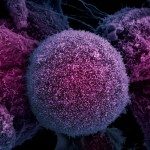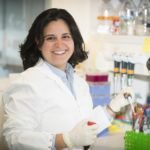Link to Pubmed [PMID] – 29155716
J Vis Exp 2017 10;(128)
Cellular senescence is a stress response that is characterized by a stable cellular growth arrest, which is important for many physiological and pathological processes, such as cancer and ageing. Recently, senescence has also been implicated in tissue repair and regeneration. Therefore, it has become increasingly critical to identify senescent cells in vivo. Senescence-associated β-galactosidase (SA-β-Gal) assay is the most widely used assay to detect senescent cells both in culture and in vivo. This assay is based on the increased lysosomal contents in the senescent cells, which allows the histochemical detection of lysosomal β-galactosidase activity at suboptimum pH (6 or 5.5). In comparison with other assays, such as flow cytometry, this allows the identification of senescent cells in their resident environment, which offers valuable information such as the location relating to the tissue architecture, the morphology, and the possibility of coupling with other markers via immunohistochemistry (IHC). The major limitation of the SA-β-Gal assay is the requirement of fresh or frozen samples. Here, we present a detailed protocol to understand how cellular senescence promotes cellular plasticity and tissue regeneration in vivo. We use SA-β-Gal to detect senescent cells in the skeletal muscle upon injury, which is a well-established system to study tissue regeneration. Moreover, we use IHC to detect Nanog, a marker of pluripotent stem cells, in a transgenic mouse model. This protocol enables us to examine and quantify cellular senescence in the context of induced cellular plasticity and in vivo reprogramming.



